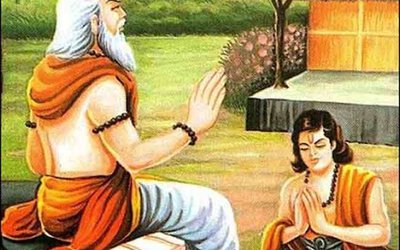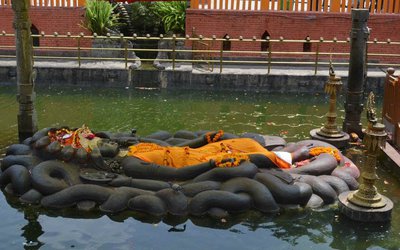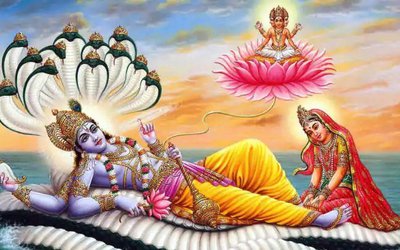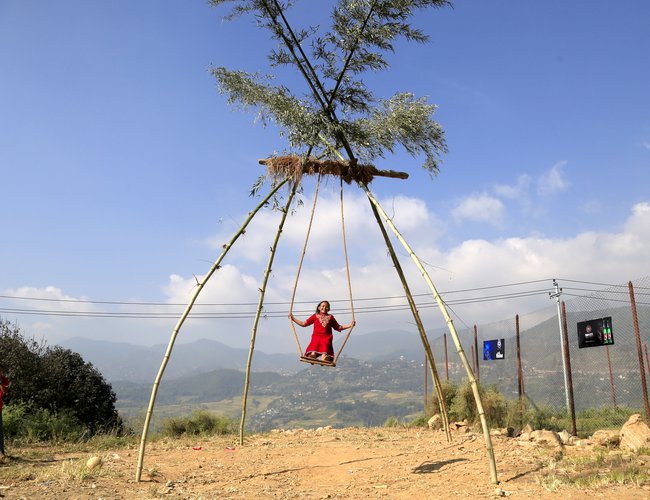
As Dashain, the most significant and lengthy Hindu festival, approaches Nepali households, the ambiance has shifted noticeably, with individuals hastening to return home to partake in the festivities with their families. While various regions have distinct customs for celebrating Dashain or Navaratri, Nepal possesses its own unique traditions. In the Kathmandu Valley and Newar communities across the nation, age-old practices continue to be observed. This is particularly noteworthy as they maintain the tradition of venerating the Shaktipith in accordance with established rituals.
The festival in the Valley is distinctive. Unlike other areas of Nepal, the Dashain celebration in the Kathmandu Valley exhibits a unique character that is not found in many other regions. This period marks the height of worship dedicated to the Shaktipith. Nevertheless, Dashain is gradually evolving into a national celebration, embraced by all communities as a representation of unity. In various parts of the country, it is regarded as an occasion for family gatherings.
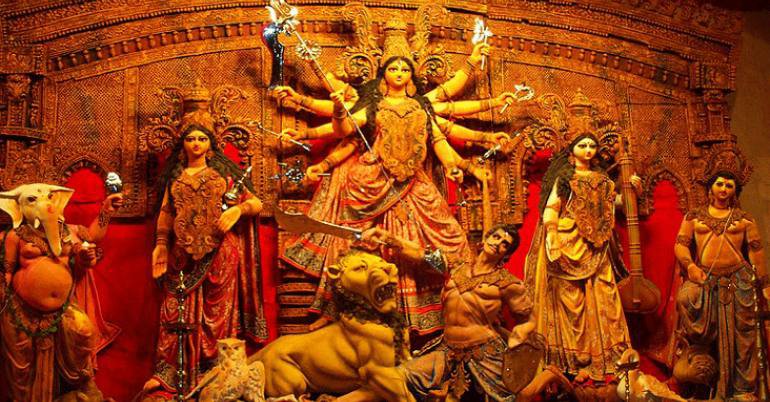
Numerous aspects of the Dashain festival are also observed in the southern plains of Nepal, known as Madhesh, where several significant Shaktipiths are located. The manner of celebrating Dashain in this region differs from that of the Valley.
Navaratri
Dashain commences concurrently with the onset of Navaratri. The inaugural day of Navaratri is marked by the worship and planting of jamara within households. The first day of Dashain is referred to as Ghatasthapana, which translates to the planting of a pot. On this day, a Kalash, a sacred vessel of water representing Goddess Durga, often adorned with her image, is positioned in the prayer area. The Kalash is filled with holy water and covered with cow dung, upon which seeds are sown. A small rectangular mound of sand is created, with the Kalash placed at its center.
The surrounding sand bed is also sown with grains. The Ghatasthapana ceremony is conducted at a specific auspicious time as determined by astrologers. At this precise moment, the priest recites a greeting and invokes Goddess Durga to bless the vessel with her divine presence. By the tenth day, the seeds will have sprouted into five or six inches of yellow grass, known as jamara. During the final five days, this sacred grass is placed on the heads of younger individuals by their elders while applying tika. The jamara serves as a symbol of both Goddess Durga and the blessings bestowed by the elders.
The ninth day is called Nawami: Temples of the mother goddess are filled with people from dawn to dusk. Animals, mostly black buffaloes, are slaughtered to honor Durga, the goddess of victory and power, and to seek her blessings. Military bands play war tunes, cannons boom, and officers with beautifully decorated medals stand in full uniform.
When the ceremony ends, the courtyard is ankle-deep in blood. On this day the god Vishwa Karma, the god of creativity, is also worshipped. All the factories, vehicles, all the machines and all the things that we live by are worshipped.
People also offer sacrifices to all moving machines like cars, airplanes, trucks etc. to get the blessings of Goddess Durga for protecting the vehicles and their occupants from accidents during the year. The whole day is colorful.
From Ghatasthapana to Dashami (10 days), people worship all the nine forms of Durga with the belief that the Goddess is present to give her blessings to the people. On the first day of Navaratri - Ghatasthapana, devotees sow jamara (small seeds). It is believed that jamara is the favorite plant of Goddess Durga, so devotees offer jamara to make her happy and get her blessings.
In some parts of India, Dussehra is considered the focal point of the festival, making it effectively 10 days instead of 9. Additionally, since Navratri depends on the lunar calendar, in some years it may be celebrated for 8 days, with Dussehra on the 9th.
Important temples in Kathmandu
Devotees visit various temples of goddesses - Bhadrakali, Shova Bhagawati, Manamaijudevi (Pachali), Guheshwari, Bangalamukhi, Chamunda (Shankhmul) and more in the capital during Dashain.
And nine forms of Goddess Durga - Shailaputri, Brahmacharini, Chandraghanta, Kushmanda, Skandamata, Katyayini, Kaalratri, Mahagauri and Siddhidaatri - are worshipped for the nine days during this festival. The nine days of Durga Puja are called Navaratri.
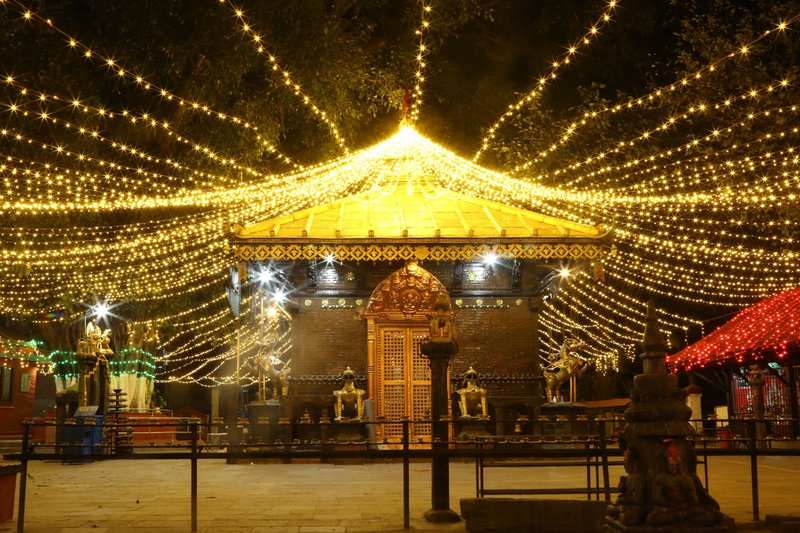
Maitidevi Temple
Rarely anyone dares to venture near the Maitidevi temple during the day and everyone, except tantrics (shamans), invariably stay away from the place at night. Tirtha Man Bajracharya, the head priest of the temple, says, "The oldest structure was built in 628 AD by Amshu Verma, a warrior under the Lichhavi king Shiva Dev" - 13 centuries before Chandra Shamsher.
Sankata Temple
Sankata Temple is located in a crowded but quiet Tebahal colony next to the crowded and noisy New Road Market. You can enter the temple area through any of the lanes that connect the market and the Tebahal colony.
Kalikasthan
Devi is the great Goddess of the Hindus, the consort of Shiva, and is worshipped in various forms corresponding to her two aspects: benevolence and ferocity. She is Uma, 'light'; Gauri, 'yellow or brilliant'; Parvati, 'the mountaineer'; and Jagatmata, 'the mother of the world' in her milder form. Her terrible emanations are Durga, 'the inaccessible'; Kali, 'the black'; Chandi, 'the fierce'; and Bhairavi, 'the terrible'.
Since 1900 on the Nepali calendar (1957 AD), the incarnation of Maha Shakti and the descendants of Shiv Kali's priests (pujaris) began with Harka Bahadur Shrestha (a Newar), who came from Thimi, near Bhaktapur. His only child, a girl named Krishna Kumari Shrestha, married a boy named Man Bahadur Khadka, a non-Newar. At present, their descendants are the chief priests of the temple.
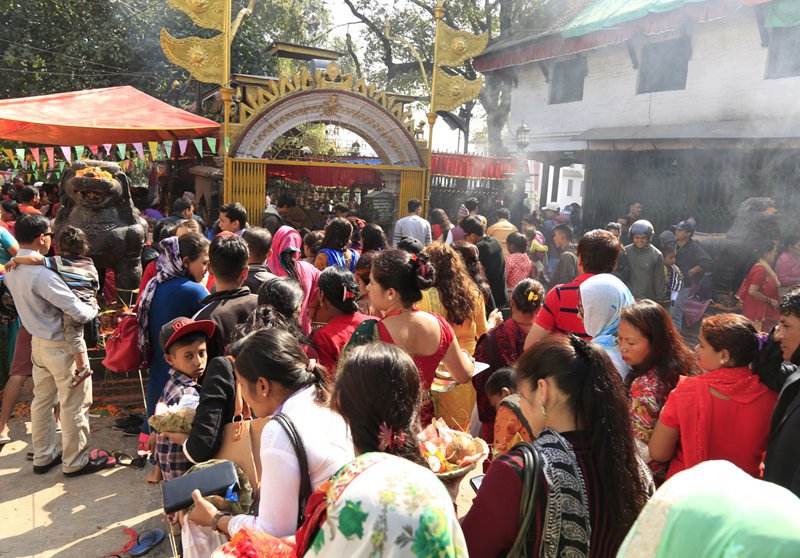
Bhadrakali
According to ancient scriptures in the Vayu Purana and Mahabharata, Bhadrakali was created by the wrath of Devi when Daksha insulted Shiva during the great Ashvamedha Yagna (horse sacrifice). According to the Tantra Rahasya, she emerged from the northern (Uttaramnaya) face (Amnayas) of Shiva, which is blue in color and has three eyes.
It is believed that Bhadrakali was a local deity that was assimilated into mainstream Hinduism, especially Shaiva mythology. She sometimes assumes a terrifying aspect and is depicted with three eyes and four, 12, or 18 hands. She carries a number of weapons, with flames flowing from her head and a small tusk protruding from her mouth.
Naxal Bhagwati
The temple of Naxal Bhagwati is located in the center of the Naxal township, close to Pashupatinath, Dillibazar and the Narayanhiti Museum. Situated at an intersection, the temple stands tall and distinct despite the encroachment of nearby shops, concrete buildings and busy traffic. It never fails to attract devotees who come in and out of the temple throughout the day. The features of Naxal Bhagwati are remarkably the same as other 'Devi' (Goddess) temples - its three tiered roof, two of which are copper plated, and carvings of other deities surrounding the temple.
Nardevi Temple
Despite a number of other temples in the locality, Nardevi is easily distinguishable. The three tired structure with one of the roofs plated in gold and its crafted pillars identify the Nardevi Mandir. According to historical data, the temple is believed to have been established in the 9th century AD by Gunakamadev, the founder of Kathmandu.
Dakshinkali
Dakshinkali is located 18 km south of Ratnapark, Kathmandu. The ancient Kalika temple is located south of the capital, which some believe is why it was named Dakshinkali (dakshin means 'south' in Nepali). The Dakshinkali temple is dedicated to Kali, the fearsome form of Lord Siva's consort, Parvati.
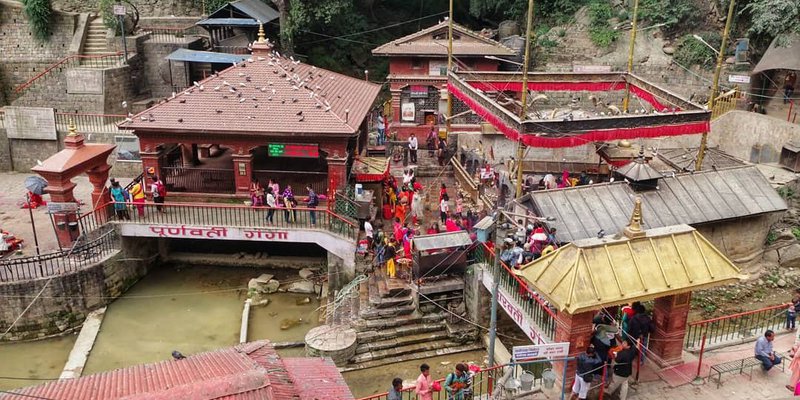
The myth is that in the 17th century, an oracle in the form of a dream told King Pratap Malla to build a temple to the goddess. It was said that this would bring him prosperity and that no epidemic would befall his subjects. The king deciphered the omen and the temple was built.
Shobha Bhagwati
For Hindus, 32 Lachin is a trait of great significance. It is believed that there are 32 attributes of perfection, mostly emphasized on women, leading to prosperity and happiness. The name 'Shobha', in the same context, means 'brilliance' (derived from Sanskrit) or someone endowed with '32 lachin'. As the name suggests, Shobha Bhagwati is believed to be a goddess of perfection and brilliance.
Significance of Dashain
Dashain is one of the most important Hindu festivals that is celebrated with great joy all over Nepal. This festival usually falls in the month of September or October and is actually celebrated for 15 days.
It starts from the bright lunar fortnight (Shukla Paksha) and ends on the full moon day (Poornima) according to the Nepalese annual calendar. The greatest Hindu festival, Dashain honors a great conquest of the gods over the evil demons. The symbol of power, Goddess Durga is worshipped during this festival.
This festival is actually the ceremony of reunion and fun. People who live far away from their home or homeland, revisit their home and get together with their families. Similarly, parents buy new clothes for their children. People enjoy eating delicious food and playing many games, including cards. People invite guests, organize feasts, visit their relatives' houses, fly kites, build bamboo swings and engage in various entertaining activities.
Throughout Nepal, Goddess Durga is worshipped in all her manifestations with innumerable pujas, abundant offerings and thousands of animal sacrifices for the ritual holy bath, drenching the Goddess in blood for days.
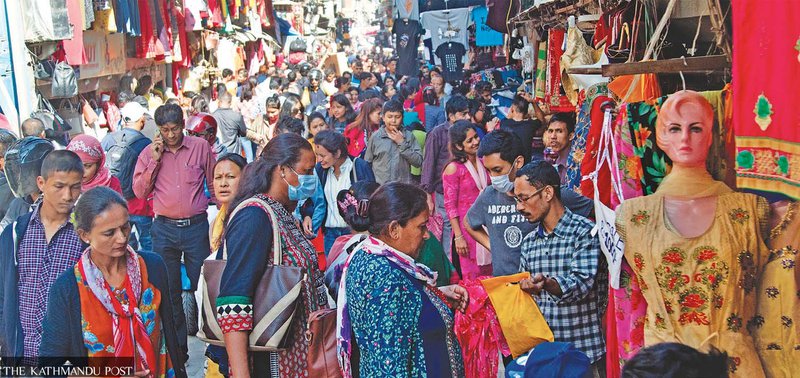
This year, the first day of the Dashain festival - Ghatasthapana - falls on October 3. The seventh day Pulpati is celebrated on October 5, followed by Asthami on October 6 and Nawami and Dashami on October 7 and 8 respectively. In addition, the festival continues for 5 more days till October 17, which is known as Kojagrat Purnima.
In preparation for Dashain, every home is cleaned and beautifully decorated, painted as an invitation to the Mother Goddess to visit and bless the house with good fortune. During this time, reunions of distant and near relatives take place in every household. The market is filled with shoppers looking for new clothes, gifts, luxuries, and huge supplies of temple offerings for the gods, as well as food for the family feast.
Thousands of sheep, goats, ducks, chickens and water buffalo are being prepared for the great slaughter. All kinds of organizations are closed for ten to fifteen days. Workers are hard to find; from the poor to the rich, everyone enjoys the festive mood. The aroma of 'Vijaya Dashami' is everywhere.
The festival celebrates the various victories of Hindu gods over demons, such as Lord Ram defeating Ravan in a duel and Goddess Durga defeating the buffalo demon Mahisasur, as well as many other demons. The festival as a whole is a celebration of the triumph of good over evil, and the stories are told throughout the ceremony to provide moral examples for the community.
Some of the activities during Dashain include fiesta-style parties, enjoying home-cooked meals, and flying kites to represent freedom. The festival usually coincides with the end of the monsoon season, and some locals believe that flying kites communicates with God to end the rainy season! People sacrifice a lot of animals during this festival, most of which are goats, sheep, chickens or buffaloes. However, the trend of sacrificing animals is changing to fruits and vegetables as the slaughter of animals is nowhere mentioned in the Hindu scriptures and the animal rights activists strongly condemn it. Some of the important days during Dashain are
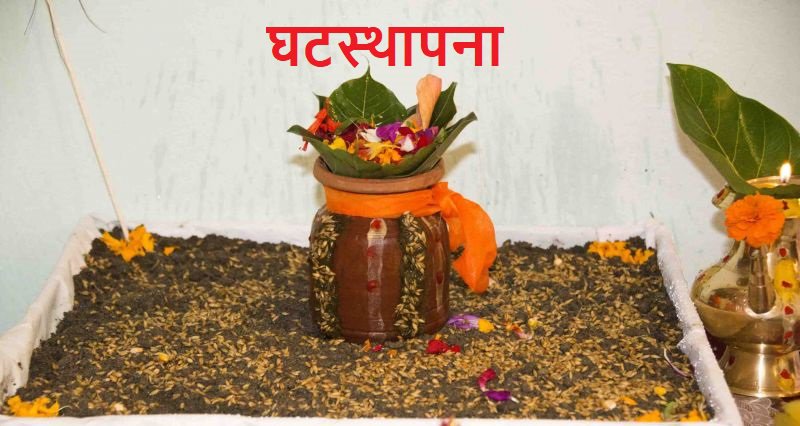
Day 1 (Ghatasthapana)
Ghatasthapana is the first day of Bada Dashain. A male member of the family plants jamara (usually barley seeds) in moist sand. By the tenth day of the festival, the seeds will have grown into yellow grass, which is used with tika to bless people with prosperity and happiness.
Day 7 (Fulpati)
The special essence of the festival comes from this day. On this auspicious day, a military parade is organized at Hanuman Dhoka. Nepal Army, Nepal Police, Civil Service, Band Music and Panchebaja also join the Fulpati parade. People clean their houses and decorate their houses with flowers. Today (Oct. 19) is Fulpati and most of the celebrations in our homes will take place today! In our Dhading home, the children will fly kites, play on the traditional swing and end the day with a barbecue and a trip to the movies! The children from our Birgunj home will start the day with puja (prayers), followed by kite flying and a trip to the Parwanipur market where there will be a huge fair!
Day 8 (Maha Ashtami)
The festivities continue as Maha Ashtami. Thousands of goats, sheep, buffaloes, ducks and chickens are sacrificed in the temple of the goddess from almost every house. In Newar community, Kuchi Bhoe is prepared in which ritually people should eat two pathi of beaten rice including various kinds of dishes in a banana leaf.
Day 9 (Maha Nawami)
The ninth day of the festival is known as Maha Nawami. On this day, the gates of the Taleju temple in Basantapur are opened to the public. Thousands of devotees go and pay obeisance to the Goddess throughout the day. This day is also known as Viswakarma Day.
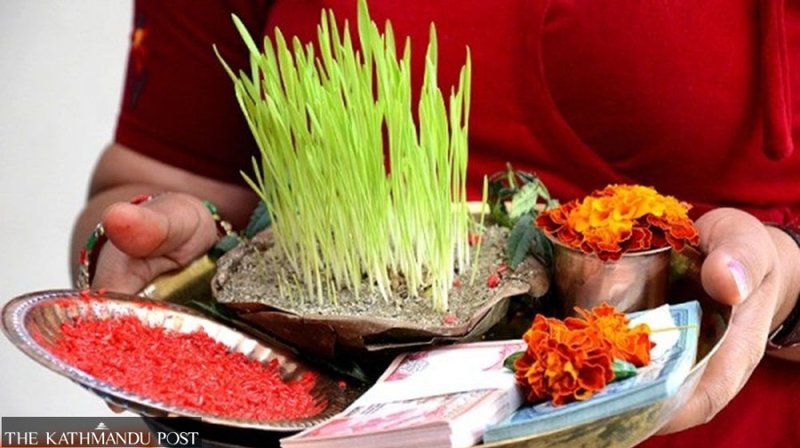
Day 10 (Tika/Vijaya Dashami)
The tenth day of the festival is known as Vijaya Dashami or "Tika". On this auspicious day, tika and jamara (sewn on day 1) are taken from elders and blessings including "dakshin" (money) are received. These festivities continue for four days until the full moon rises. During this time, families and relatives who live apart meet and take blessings from the elders.
At a time when the country is facing several economic and political challenges, the festival also brings relief to all. The festival helps to revive the economy as people buy the goods.
- MELAMCHI WATER SUPPLY: No Interruption During Monsoon
- Jun 25, 2025
- KOREAN RETURNEES: Successful Integration
- Jun 25, 2025
- UPPER TRISHULI-1: Engaging With Local
- Jun 25, 2025
- IME GROUP: Twenty Five Years Of Journey
- Jun 24, 2025
- NEPAL’S AIR POLLUTION: A Growing Health Concern
- Jun 24, 2025
